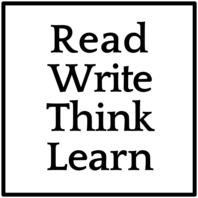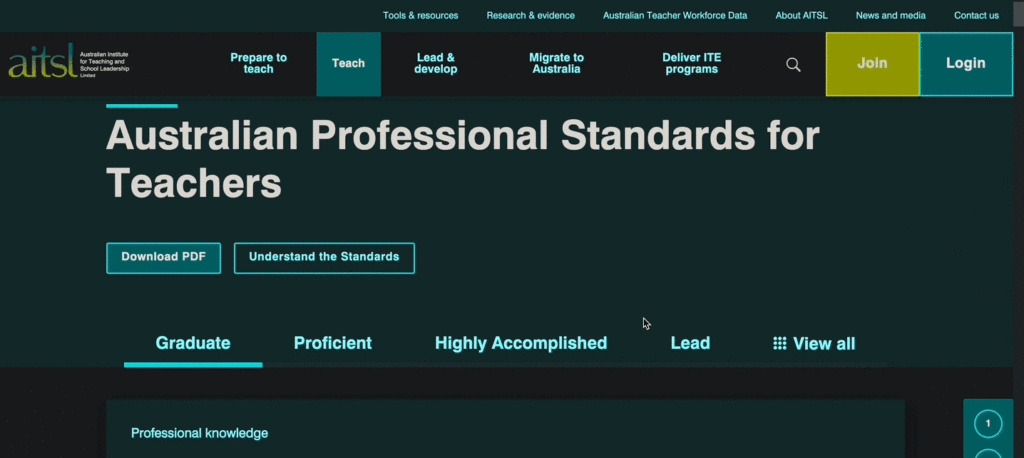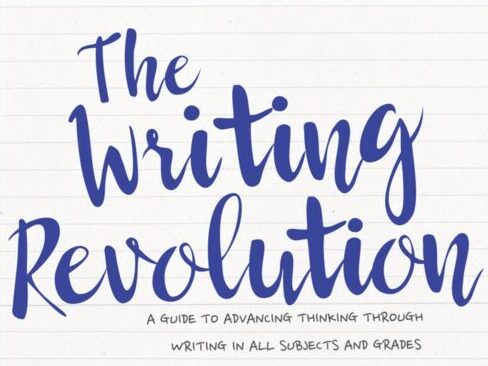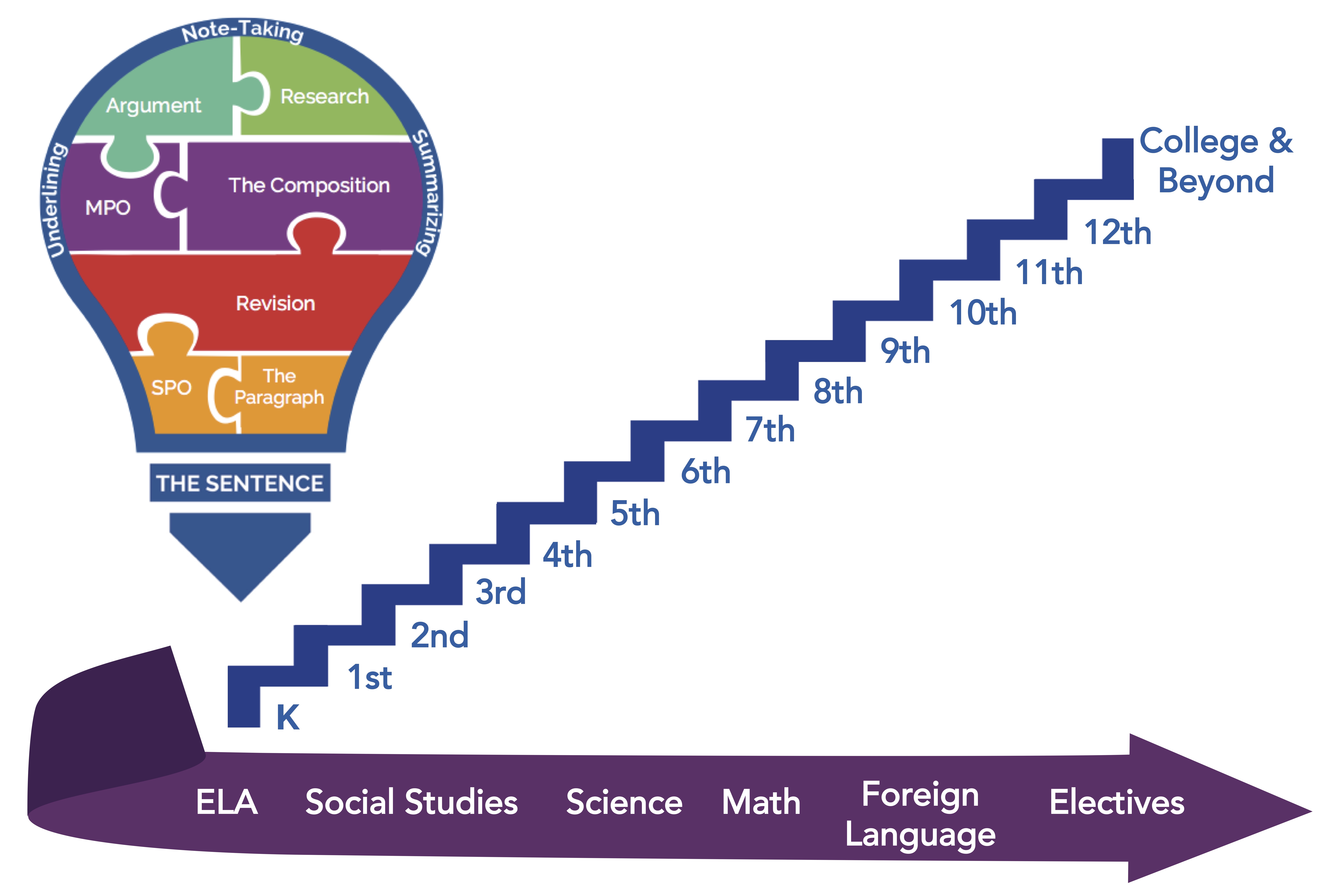
Recently, I completed a PETAA short course delivered by Professor Deb Myhill of the University of Exeter named Going Meta: Enabling Rich Talk about Writing. Of all the approaches to writing I’ve come across, Myhill’s is likely the only one that attempts to integrate ideas from the three theoretical perspectives on writing. Since it doesn’t leave out a critical piece of the writing puzzle, I think that makes it quite special and potentially game-changing.
In this post, I’ve drawn on my learning through the course to outline key terms relevant to Myhill’s approach, discuss its benefits, and explain how you can use it to improve your students’ writing skills.
Key perspectives on writing
Every primary and secondary school teacher wants to help their students become strong writers. There are many specific approaches out there for achieving this, but did you know most are underpinned by one or two of three main theoretical perspectives on writing: cognitive, linguistic, and/or sociocultural?
Briefly, cognitive approaches focus on helping children develop cognitive, metacognitive, and self-regulated learning strategies for managing the processes of writing, such as planning, drafting, revising, editing, and publishing. They are about the thinking processes you engage in while writing.
Linguistic approaches focus mainly on helping children learn to use language features and structures of written texts. They are about your growing mastery of language for writing.
Sociocultural approaches focus on influences of culture and social contexts on what written forms are valued. They are about how you learn to write through collaboration, co-construction, and shared values.
Specific approaches to the teaching of writing tend to draw on ideas from one or more of these perspectives. As an example, self-regulated strategy development (SRSD) can be defined as a sociocognitive approach, since it develops children’s use of cognitive processes and strategies to write different genres for different social purposes. It’s important for teachers to know which perspective underpins their approaches to writing instruction since this will impact what aspects of writing are taught, how they are taught, and what skills and understandings they will help students develop.
Metalinguistic understanding
Deb Myhill’s approach to writing instruction is based largely on helping students develop metalinguistic understanding. Myhill described metalinguistic understanding as a subcategory of metacognition. While metacognition is about reflecting on your own thinking and learning processes, metalinguistic understanding is about reflecting on how writers use language to achieve social purposes (Myhill et al., 2020). Students with strong metalinguistic understanding are able to identify and reason about how words, sentences, and paragraphs make meaning in texts (Cremlin & Myhill, 2012). It enables students to both comprehend and produce written texts (Gombert, 1992).
(Meta)talking the talk
Classroom conversations that foster metalinguistic understanding (i.e., how is language working in this text) is known as metatalk. Through metatalk, a teacher can draw students’ attention to a writer’s authorial intention and the language and structural choices they make to achieve the intention (Myhill, 2021). Teachers can use metatalk as a pedagogical device to check students’ metalinguistic understandings before, during, and/or after a teaching episode.
Also, even if students don’t know the technical grammar terms, they can still talk about different aspects of texts and show metalinguistic understanding with everyday language. That said, across the years of schooling, students should be more capable of learning a specific language (or a metalanguage) for referring to given linguistic features, such as noun phrases, verbs, adverbs, and so on. As per the Australian Curriculum: English, Australian teachers are expected to help students learn about these and many other linguistic features from Year 1.
Benefits of developing students’ metalinguistic understandings
According to Myhill, students with strong metalinguistic understanding can look critically at writing and make more informed, intentional writing choices. It reveals the rich possibilities of language and gives writers agency as they create texts (Cremin & Myhill, 2012). It also makes learning visible and encourages students to play, explore, and experiment when making writing choices (Myhill, 2021).
Like many of the important things in literacy, metalinguistic understanding needs to be taught explicitly.
Four ways to build students’ metalinguistic understandings
1. Create opportunities underpinned by teacher knowledge
First, teachers need to create opportunities for investigations into the choices made in texts written by experienced authors, the teachers themselves, and the students. This requires time and for teachers to have a sufficient knowledge about language and structural features of texts. If the teacher can’t articulate what writing choices make a text do its work, they will struggle to build their students’ metalinguistic understandings of it.
2. Use Myhill and colleagues’ LEAD Principles
Deb Myhill and her colleagues at the University of Exeter developed the LEAD Principles to support teachers to scaffold thinking about grammar as being meaningfully linked to writing (Myhill et al., 2020). The LEAD acronym stands for Links, Examples, Authentic Texts, and Discussion.
Links: Teachers make links between a grammatical feature being introduced (e.g., adjectives) and how it works in a focus written genre (e.g., narratives).
Examples: Teachers explain the grammar with examples rather than long explanations.
Authentic texts: By using metatalk to explore the features of authentic model texts, teachers make connections between writers and the broader writing community.
Discussion: Teachers can promote metalinguistic understandings by engaging children in discussions about grammar and the work it does in written texts.
3. Use specific strategies
While the LEAD Principles are relatively broad and flexible, in Myhill’s short course (Myhill, 2021) she suggested the following ten specific strategies for fostering stronger metatalk and metalinguistic understandings in classrooms:
Strategy 1. Fill the Gap: Select an extract of text, probably a paragraph, which allows for students to see the language choice within its surrounding context, and delete the particular language choice you are going to explore. Invite students to discuss what might go in the gap, then reveal what the author chose, and discuss why the author may have made that choice.
Strategy 2. Let’s Compare!: One very effective way to help students see how different language choices can create different effects is to explore two different versions: this can be at the level of a word, a phrase or a sentence (possibly even two paragraphs?)
Strategy 3. Sort it out: Giving students words, or sequences of words, printed on cards to undertake a card sort activity is helpful because the physical manipulation of the cards to create different possibilities also generates a lot of focused metalinguistic talk about the options. It works particularly well to explore the syntactic structure of a sentence.
Strategy 4. Playing with possibilities: Invite students to generate a list of possibilities for a particular purpose eg a list of noun phrases to describe a character; or a list of sentences to describe an image of an event. Then invite them to choose two of their possibilities which create different effects, and to explain to the class what the effect is and what language choice is shaping this.
Strategy 5. Thinking Questions: Crucial to the quality of the peer metalinguistic talk is how the talking activity is set up. Pay particular attention to the questions you give students to steer the activity into focused, purposeful discussion, but without constraining it with limiting or closed questions.
Strategy 6. Collaborative Composition: Give students a short writing composition task to write together, perhaps just one paragraph. There should be a clear goal for this writing which will guide the talk which will occur during the writing. One real benefit of collaborative writing is that peers have to articulate their choices and reasons for those choices.
Strategy 7. Collaborative Revision: This is similar to the collaborative composition but more focused on deliberate decision-making through revision. It works particularly well when students are asked to rewrite together a short piece of text which involves an explicit change eg rewriting this character description to infer that he is gentle, not aggressive.
Strategy 8. Questioning the Writer: In pairs, students read a text, or section of text, looking at how the writer has crafted a particular aspect of the text eg how an argument has been signposted; how formality or informality have been used; how a narrative opens. The students create a list of questions for the author about the language choices that they can see in this extract which link to the particular aspect under focus. These questions can then be used for subsequent group, and/or whole class discussion.
Strategy 9. Text-marking: There are lots of different possibilities for asking students to read a text and mark the text in some way which highlights the language choices made. It could be highlighting all the prepositional phrases which evoke a setting; underlining any verbs which convey a sense of emotion; highlighting formal language in blue and informal language in red. As with the card sort and collaborative writing, it is the peer talk which occurs around this activity which is valuable.
Strategy 10. The Author Talks: After a period where students have been composing their own texts, create time for students to explain their own authorial choices to peers. This works best when there is a focused question to consider and when students are asked to choose one example to discuss eg ‘Choose one noun phrase where you are particularly pleased with how strong a visual image it evokes’. The peer talk is much less effective if student are asked to talk about their writing more generally.
4. Engage in metalinguistic modelling
The final way to build metalinguistic understanding should appeal to any fans of explicit instruction. Essentially, when the teacher models their own thinking while writing, this can assist students to understand what linguistic choices are available and how to make stronger linguistic decisions.
Such modelling could be focused on what the teacher is writing while they write or it may involve them thinking aloud about connections between linguistic choices and the effect in a written text (Myhill, 2021). From Myhill’s studies into metalinguistic modelling, she and her colleagues found that teachers need to be clear and focused about what they are modelling. If they are unfocused or try to cover too many aspects of writing, the intended skills will not transfer to students’ writing.
Also, when teachers focus too much on ‘what’ features should be in a written text, students may never even think about ‘why’ these choices make sense for that type of writing. Unfortunately, this prescriptive focus on including a select set of language features without a clear focus on meaning or purpose is promoted in several popular approaches to writing instruction.
Some key takeaways from the course
So, what’s missing from this approach?
After finishing Myhill’s course, I was still left pondering many questions that could be the basis of further research in classrooms with teachers and their students. For example:
- What counts as strong metalinguistic understandings of different genres in early, middle, and upper primary school? Without this knowledge, it’s hard for teachers to know what to focus on in their classrooms.
- Does this approach follow any kind of developmental pattern, or is it all just randomly generated depending on what teachers teach at a given point? If a teacher chooses to focus on the features of one set of model texts over others, could that change everything their students learn about that kind of writing?
- If this is the case, how can there be any consistency in this approach, particularly when aiming to support struggling writers, those in minority groups, or those in low SES areas?
Want to learn more?
If you would like to foster your students’ metalinguistic understandings and help them become more independent writers, it would pay for you to ‘know your stuff’ when it comes to the grammatical, structural, and literary/rhetorical aspects of different written genres. In fact, I would only recommend teachers complete this short course if they already possess an adequate knowledge of language, since it assumes you know your prepositional phrases from your conjunctions and your narrative text structures from your persuasive text structures.
Since I felt Myhill’s course might be most beneficial for teachers more knowledgeable about linguistic features, I asked Associate Professor Pauline Jones (PETAA’s President) and Robyn Topp (PETAA’s Manager of Professional Learning) if they had any introductory offerings to support teachers new to text features. While the following courses are currently not open for registration, they should be again in 2022:
- Rod Campbell has an online course named Teaching Knowledge for the Art and Craft of Writing that provides an introduction to English language and sentence grammar, and advanced sentence grammar and cohesion.
- Jennifer Asha has a course titled Teaching Grammar with Rich Literature, in which she covers basic skills in functional grammar and how to teach it in the context of quality texts and dialogic pedagogy.
- Jo Rossbridge and Kathy Rushton offered a face-to-face course named Grammar and Teaching from April – June 2021. This popular course is likely to be converted into a self-paced, online course in 2022.
- PETAA will also soon be launching an open access Early Career Teachers’ Portal with quite a bit of grammar and writing content for new (and old) teachers to upskill in this area.
As a parting comment, the metalinguistic understanding course involved participants planning, writing, and revising a short character description (roughly a paragraph in length) over the five modules. It was such a joy to engage in my own creative writing like this. I believe all teachers of writing should be writers themselves, honing and experimenting with their own writing choices over time just like they expect of their students. Sharing your own writing with a class may feel a bit daunting, but it provides considerable motivation and encouragement for students to write and share their own ideas and understandings with others. After all, isn’t that what it’s all about?
References
- Andrews, R. (2010). Teaching sentence-level grammar for writing: The evidence so far. In T. Locke (Ed.), Beyond the grammar wars: A resource for teachers and students on developing language knowledge in the English/literacy classroom (pp. 90-108). Routledge.
- Andrews, R., Torgerson, C., Beverton, S., Freeman, A., Locke, T., Low, G., Robinson, A., & Zhu, D. (2006). The effect of grammar teaching on writing development. British Educational Research Journal, 32(1), 39-55.
- Cremin, T., & Myhill, D. (2012). Writing voices: Creating communities of writers. Routledge.
- Gombert, J. E. (1992). Metalinguistic development. University of Chicago Press.
- Myhill, D. (2021). Going meta: Enabling rich talk about writing. Primary English Teaching Association of Australia – PETAA College. https://www.petaa.edu.au/iCore/Events/Event_display.aspx?EventKey=DM181021&WebsiteKey=23011635-8260-4fec-aa27-927df5da6e68
- Myhill, D., Watson, A., & Newman, R. (2020). Thinking differently about grammar and metalinguistic understanding in writing. Bellaterra Journal of Teaching & Learning Language & Literature, 13(2). https://doi.org/10.5565/rev/jtl3.870













